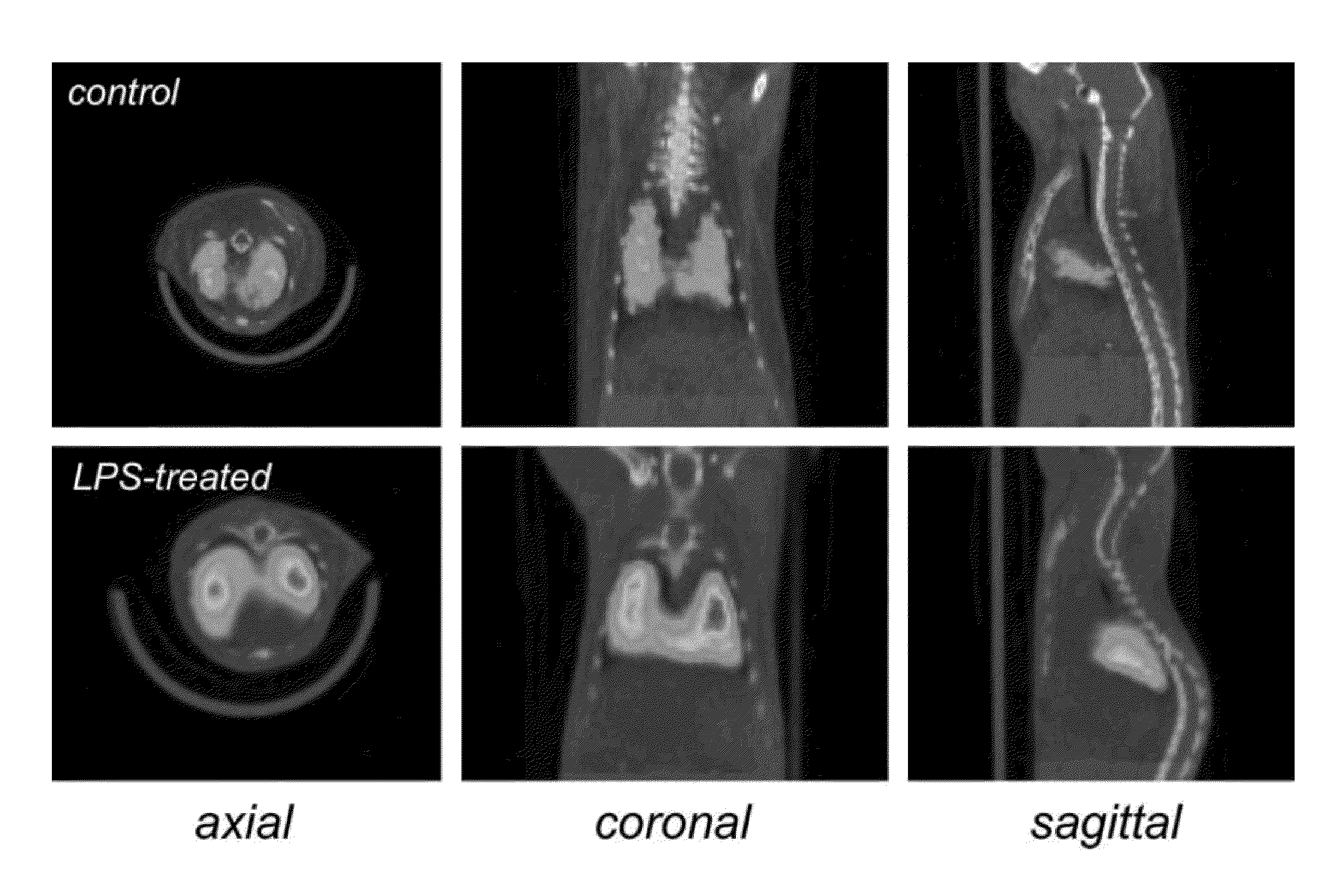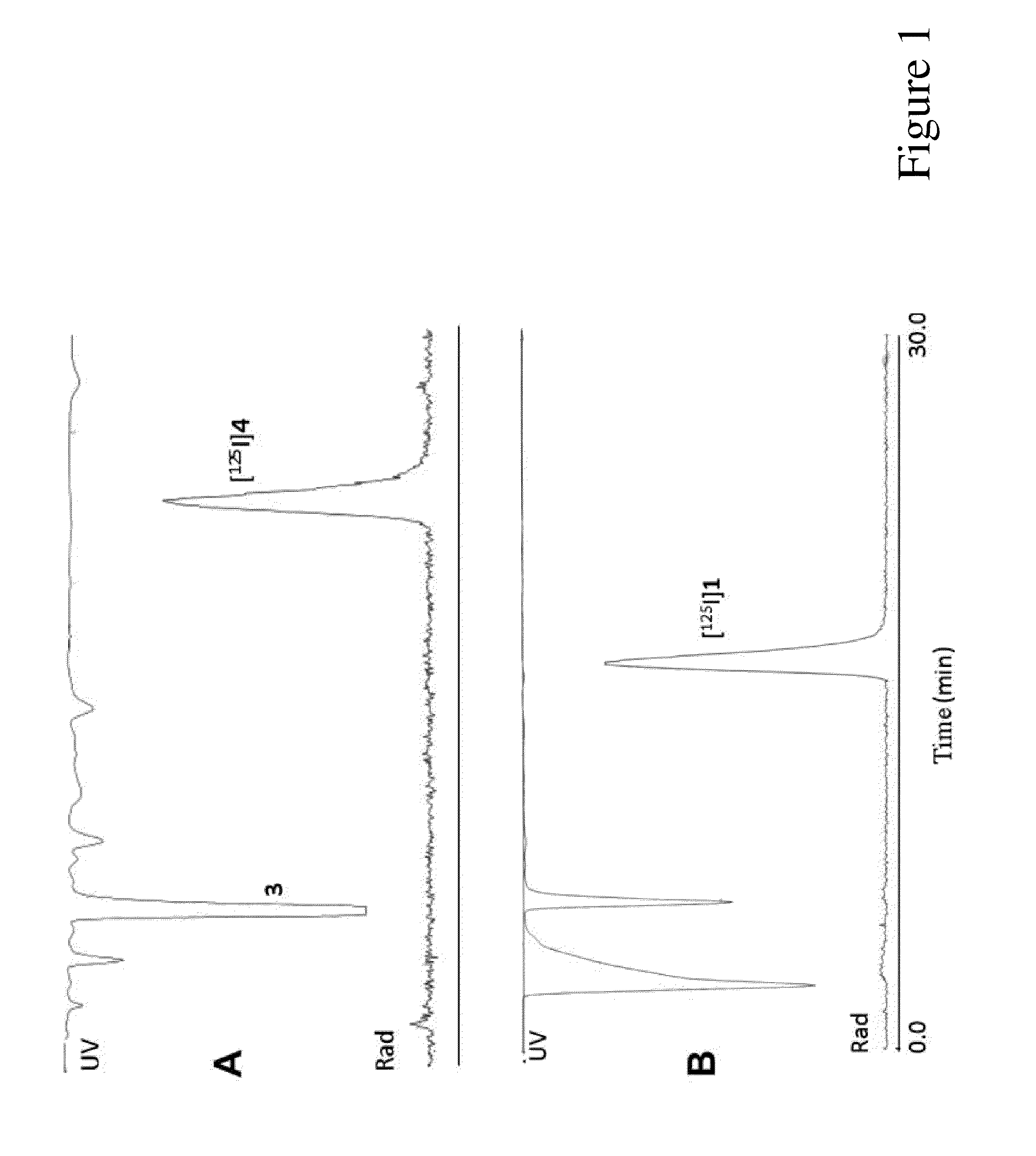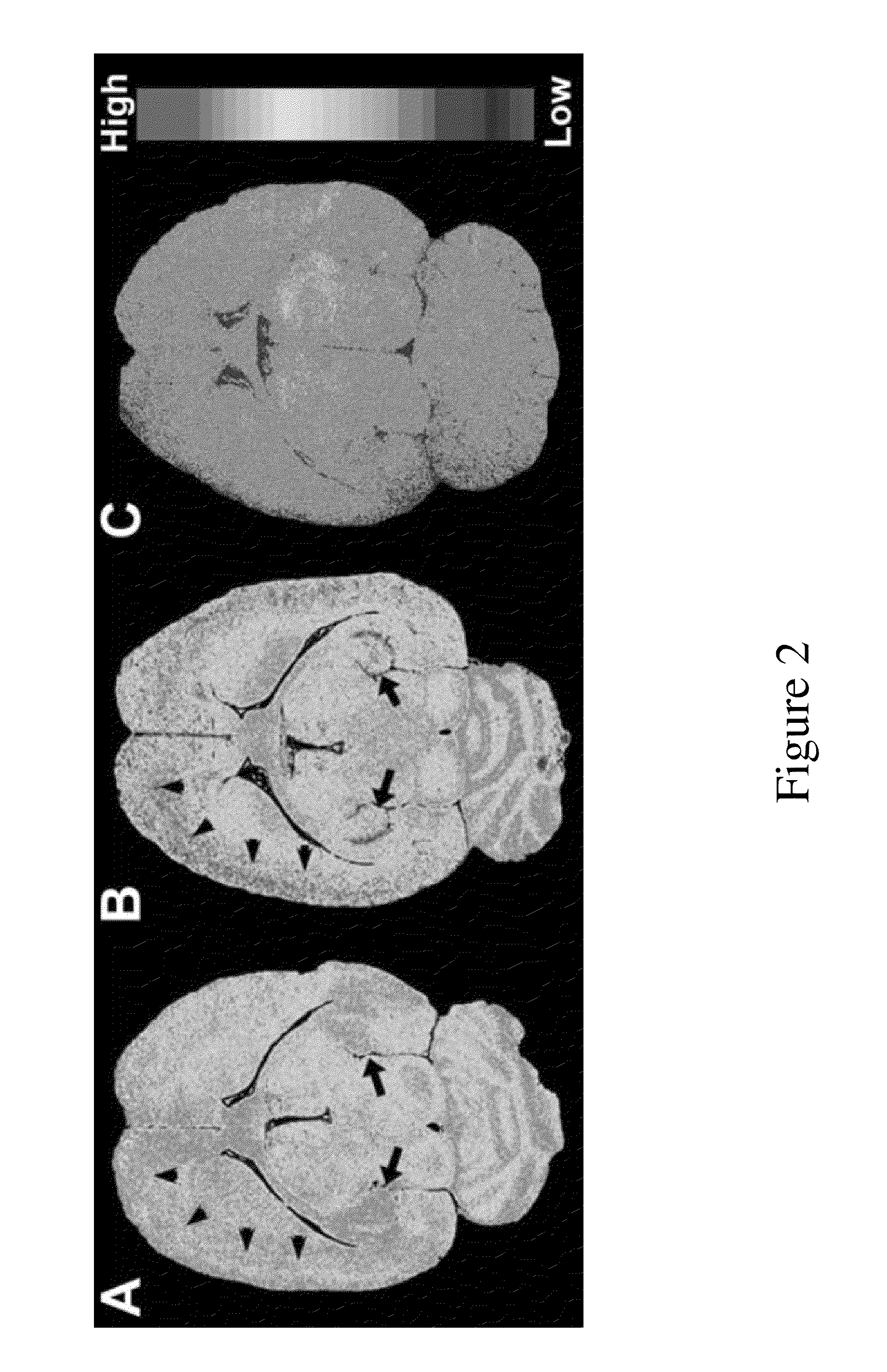TSPO-targeting compounds and uses thereof
a technology of tspo and target compounds, which is applied in the field of0003translocator proteins, can solve the problems of insufficient longitudinal assessment of tspo in sandhoff disease and its comparison with behavioral endpoints, and the inability to fully investigate the long-standing and unmet needs
- Summary
- Abstract
- Description
- Claims
- Application Information
AI Technical Summary
Benefits of technology
Problems solved by technology
Method used
Image
Examples
example 1
[0078]N,N-Diethyl-2-[2-(3-iodo-4-methoxyphenyl)-5,7-dimethylpyrazolo[1,5-a]pyrimidin-3-yl]acetamide (iodoDPA-713) 1 was synthesized according to the scheme below in three steps from N-diethyl-2-[2-(4-methoxy-phenyl)-5,7-dimethylpyrazolo[1,5-a]pyrimidin-3-yl]-acetamide 2 (DPA-713) (Wang et al., Biochem. Biophy. Res. Comm. Vol. 389, no. 1, pp. 80-83). Compound 2 was prepared by the procedure of James et al. (James et al., Bioorg. Med. Chem., vol. 13, pp. 6188-6194, 2005). Attempts were made to iodinate 2 directly to 1 using NaI and N-chlorosuccinimide or chloramine-T as oxidants in acidic solvents (concentrated trifluoroacetic acid or trifluoromethanesulfonic acid). However, those conditions produced no or extremely low yields of 1. Consequently, 2 was demethylated by reaction with BBr3 in methylene chloride to form the more reactive phenol derivative N,N-diethyl-2-[2-(4-hydroxy-phenyl)-5,7-dimethyl-pyrazolo[1,5-a]pyrimidin-3-yl]-acetamide 3. Compound 3 was smoothly ...
example 2
Imaging
In Vitro Autoradiography
[0085]Fresh-frozen brains were sectioned (20 μm) on a freezing cryostat in the horizontal plane. Brain sections were thaw-mounted onto poly-L-lysine-coated slides (Sigma) and stored at −20° C. until used. Autoradiography using [125I]IodoDPA-713 ([125I]1) was performed on adjacent brain sections using the following procedures. Slides were thawed and dried at 37° C. for 30 min and prewashed in 50 mM Tris-HCl buffer (pH 7.4) for 5 min at room temperature. Sections were then incubated in 1.4 nM [125I]1 in 50 mM Tris-HCl buffer for 30 min at room temperature. For non-specific binding, adjacent sections were incubated in the presence of 10 μM racemic PK11195. The reaction was terminated by two 3 min washes in cold buffer (4° C.) and two dips in cold deionized water (4° C.). Sections were air-dried and apposed to Kodak Bio-Max MR film for 1 h. Images were acquired using the MCID image analysis software (InterFocus Imaging Ltd., Cambridge, England).
[0086]The f...
example 3
Behavioral Tests
Locomotor Activity.
[0093]Mice were placed in open field activity chambers with infrared beams (San Diego Instruments Inc., San Diego, Calif., USA) for 1 h, and during this time, horizontal and vertical (rearing) activities were automatically recorded.
[0094]Motor skill was measured using the rotarod apparatus (Columbus Instrument, Columbus, Ohio). The latency time that the mouse remained on the rod at accelerating speeds from 4 to 40 revolutions per minute (RPM) was recorded. Each mouse was trained for 5 min, and the training session was followed by a 30-min rest period in the home cage. Mice were then placed back on the rotarod for three trials starting at 4 RPM with accelerating speeds by 4 RPM every 30 s to a maximum of 40 RPM. Each trial was separated by a 10-min rest period. Mice were tested for 3 consecutive days when a steady baseline level of performance was attained.
Progression of Motor Function Deficits in Sandhoff Disease Mice.
[0095]It was previ...
PUM
| Property | Measurement | Unit |
|---|---|---|
| latency time | aaaaa | aaaaa |
| latency time | aaaaa | aaaaa |
| variable wavelength UV/ | aaaaa | aaaaa |
Abstract
Description
Claims
Application Information
 Login to View More
Login to View More - R&D
- Intellectual Property
- Life Sciences
- Materials
- Tech Scout
- Unparalleled Data Quality
- Higher Quality Content
- 60% Fewer Hallucinations
Browse by: Latest US Patents, China's latest patents, Technical Efficacy Thesaurus, Application Domain, Technology Topic, Popular Technical Reports.
© 2025 PatSnap. All rights reserved.Legal|Privacy policy|Modern Slavery Act Transparency Statement|Sitemap|About US| Contact US: help@patsnap.com



